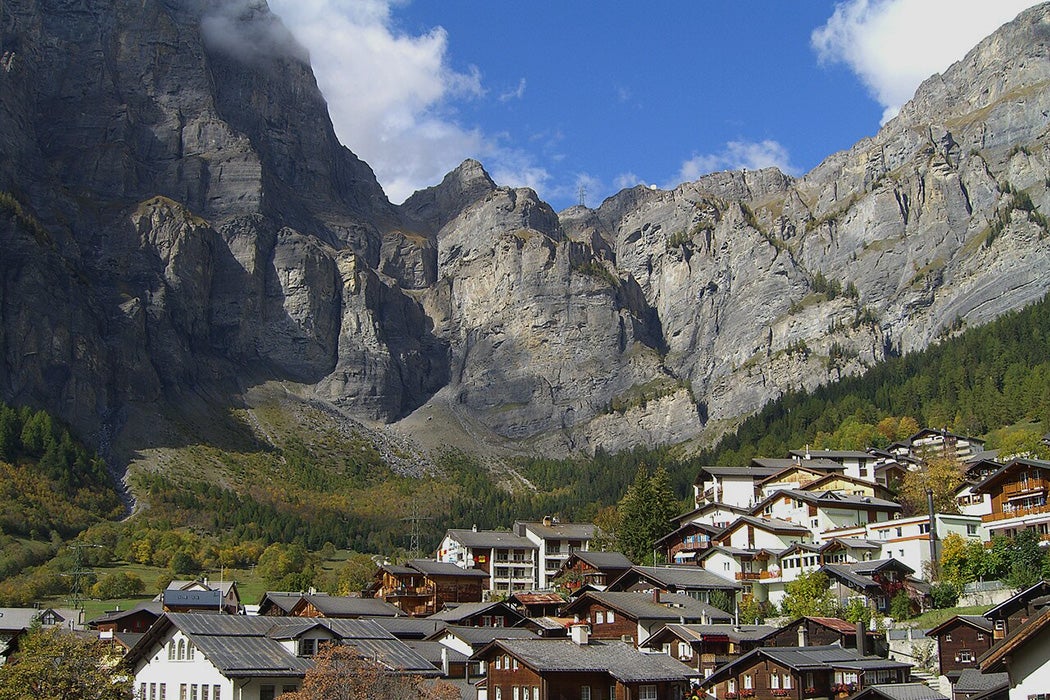In a little town in Switzerland, the wind begins to change. The sky clears to a crystalline blue; the air turns balmy. A fluffy bank of clouds begins to curl over the mountain peaks to the south.
It’s as perfect as a postcard, but to a few people in the town below, it spells disaster. These are the signs of an incoming Foehn, a warm, dry downslope wind that is rumored to carry a whole host of mysterious symptoms on its back: migraines, depression, confusion, increased risk of accidents, and more.
Many are immune to the effects of the Foehn (föhn), but those who suffer from it consider themselves to be föhnfühlig, “Foehn sensitive.” There are even special weather reports intended for the sensitive, warning that a disquieting wind is due.
In 2007, the anthropologist Sarah Strauss interviewed residents of Leukerbad, a Swiss village, to learn about their experiences with the Foehn. While some of her interviewees brushed off the stories as nothing but hypochondria, one discussant told her,
I was in Lucerne for three years and I could always say, by 6 or 7 a.m., in my room, “today is Foehn”—this because I had already heard the police and ambulance sirens at least two to three times, and then one could reliably say, oh, today is Foehn weather.
To be sure, the wind has obvious physical effects that could account for the increased stress of residents when it’s present. An account of a 1911 investigation captures the drama of a Foehn:
If it is summer the atmosphere becomes stiflingly hot, if winter the keen frosty air turns mild and close. This wind often blows with great violence, and unless one’s windows are promptly closed everything in the house is speedily covered with a thick layer of dust… The ski-runner beholds with dismay the complete disappearance of the snow, in a few hours, from the mountain slopes; while the skater sees the ice turning to water beneath his eyes.
It churns up the lakes, making wild waves, and threatens to rip the roofs off homes. In the summer, it can seed wildfires by sending sparks flying; in the winter, its sudden heat can set loose avalanches.
So, can Foehn sickness be explained away by the strain of being subjected to unpredictable weather? Or is it something more specific: exposure to sudden shifts in barometric pressure, perhaps? The underlying causes are mysterious, and some scientists remain dubious that the link is anything more than the power of suggestion.
Peculiarly enough, however, Foehn sickness is a cross-cultural phenomenon. The Foehn of Switzerland has given its name to a whole category of winds; the term “foehn” now encompasses any wind that sweeps down the lee of a mountain range bringing dry, warm air. And many foehns are tied to similar psychological symptoms, wherever they blow.
Weekly Newsletter
In Argentina, the dry and dusty Zonda is known as a “witches’ wind” that brings sleeplessness and depression. Polish folklore holds that the wild Halny wind of the West Carpathians “carries insanity.” The foehn wind that blows over Canterbury in New Zealand is known in Māori as Te Hau Kai Tangata, “the wind that devours humankind,” and associated with increased crime rates and hospitalizations.
The infamous Santa Ana winds, too, share many qualities with Foehn winds; their disturbing effects were immortalized by Joan Didion, who wrote,
I have neither heard nor read that a Santa Ana is due, but I know it, and almost everyone I have seen today knows it too. We know it because we feel it. The baby frets. The maid sulks. I rekindle a waning argument with the telephone company, then cut my losses and lie down, given over to whatever it is in the air. To live with the Santa Ana is to accept, consciously or unconsciously, a deeply mechanistic view of human behavior.
Proverbially, “wind” often refers to that which we cannot control—“the winds of change,” “throwing caution to the wind,” and “sow the wind, reap the whirlwind.” To live with the Foehn, perhaps, is to have an intimate experience of that untameable wildness—to be tossed on the wind.







